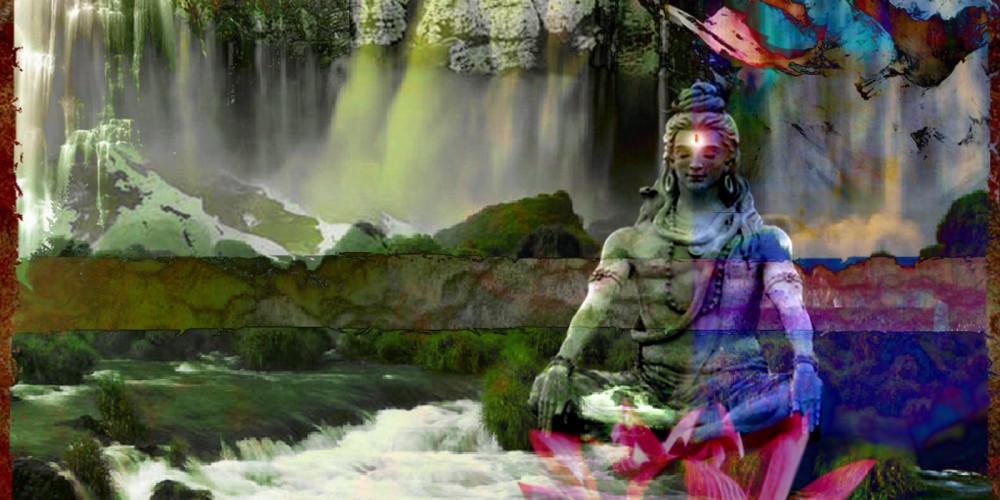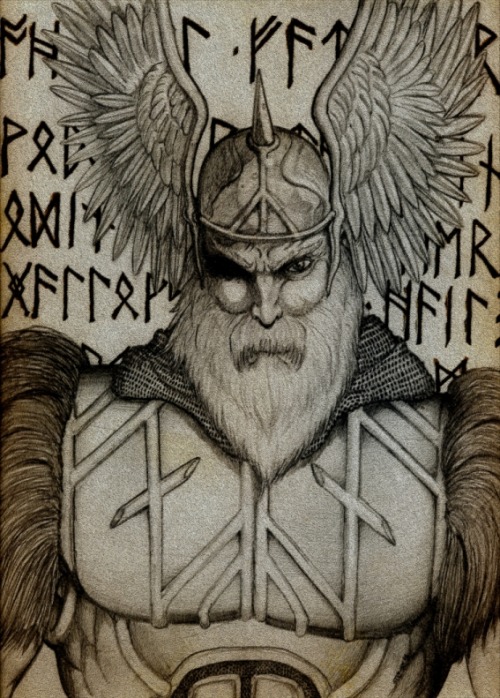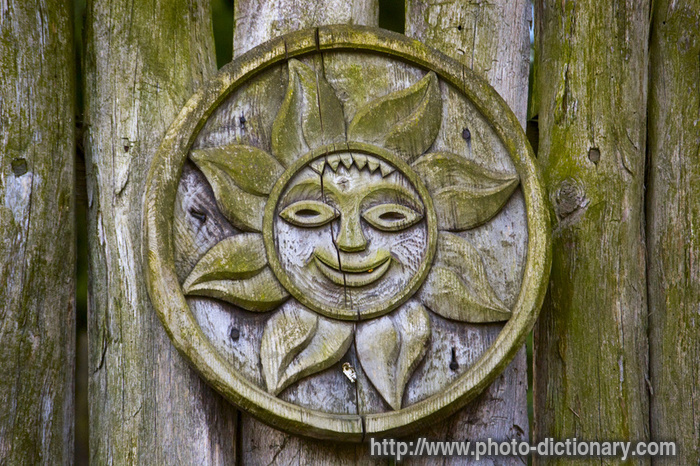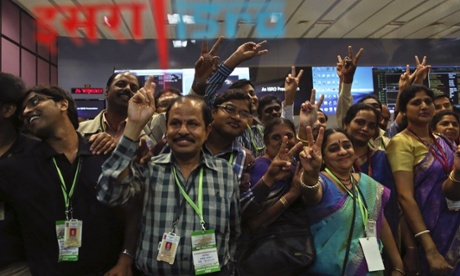 LATEST UPDATES
LATEST UPDATES
- We Need Rule of Dharma not ‘Rule of Law’
- The Kama Sutra : Beyond the Sex
- Should India be Secular or Hindu?
- What’s up with the ‘dot’ on the forehead ?
- Defaming the Hindu Sacred Feminine ( Part 1 )
- Hindu terrorism, how to prevent it
- Navaratri and its Spiritual Symbolism
- Meghnad Desai: Lord of the Lies
- Hindus of Cambodia – Kampuchea
- A Hindu View on Drug Use and Abuse
- Vedic Evolution of Consciousness
- Dr Llewelyn Morgan : Another Hindu-Phobic from Oxford ?
- Vedic Astrology and Marriage Compatibility
- Influential British Christian Group’s Civil War Agenda in India
- Buddha : The Great ‘Caste’ Reformist ?
Return of the Pagans
Also see : http://sookta-sumana.blogspot.com/2009/08/freedom-of-thinking-essence-of.html
http://sookta-sumana.blogspot.com/2012/12/be-vigilant-of-vibrant-supraphrenic.html
http://sookta-sumana.blogspot.com/2012/05/one-godism-is-primarily-political-in.html
http://sookta-sumana.blogspot.com/2012/08/more-on-one-godism-and-devas-
devatas.html
http://sookta-sumana.blogspot.com/2012/05/are-devas-and-devatas-findings-of.html
http://sookta-sumana.blogspot.com/2012/07/vedic-agama-magnificent-inviting.html
http://sookta-sumana.blogspot.com/2012/12/be-vigilant-of-vibrant-supraphrenic.html
http://sookta-sumana.blogspot.com/2012/05/one-godism-is-primarily-political-in.html
http://sookta-sumana.blogspot.com/2012/08/more-on-one-godism-and-devas-
devatas.html
http://sookta-sumana.blogspot.com/2012/05/are-devas-and-devatas-findings-of.html
http://sookta-sumana.blogspot.com/2012/07/vedic-agama-magnificent-inviting.html
 Once human beings communed freely with the forces of nature. They felt a spirit in every hill or vale. They saw a Divine face in the Sun and the Moon. They felt a consciousness in the mountains, trees and clouds. They recited poetry, performed rituals, and had profound meditations on the sacred world order, which they discovered allied with their own inner Self. Those who possessed such insight were the sages, seers, druids or rishis that guided the culture.
Once human beings communed freely with the forces of nature. They felt a spirit in every hill or vale. They saw a Divine face in the Sun and the Moon. They felt a consciousness in the mountains, trees and clouds. They recited poetry, performed rituals, and had profound meditations on the sacred world order, which they discovered allied with their own inner Self. Those who possessed such insight were the sages, seers, druids or rishis that guided the culture.
The advent of the One God and his one book banished the nature spirits from the Earth, disconnected us from our ancestors, and removed us from the grace of the great Gods and Goddesses. Our human god like a superego came to rule over our psyche and alienate us from life. Pagan learning that included natural healing, astrology, the occult and yoga was dismissed as dangerous, if not demonic.This One God was not a universal formation (though one may argue that he originally might have been). He represented not a unity of truth, but a single God opposed to all others. He demands, like a jealous husband, an exclusive loyalty. He brought his people not to the Oneness but to a duality of the true believer and the infidel that ushered in a reign of mistrust, hatred and eventually terror upon the world in the name of religion.
But the One God could only rule over a dark age of the oppression. He had to banish the light of reason and freedom of inquiry, maintaining his rule with force and propaganda. His rule, though lasting for some centuries, had to be transient. With the return of reason, observation and open communication in the modern world, his domination must come to an end. The great Gods and Goddesses are again returning as our natural interest in higher consciousness reawakens. May their beautiful and friendly grace come forth once more!
Hinduism and Native Traditions
 Hinduism reflects the religion of nature and the earth. It is present externally in the clouds and the stars, the hills and the rivers. We can see Hinduism in all native traditions and in all ancient religions, particularly where the Sun, the symbol of the Atman or higher Self, is worshipped. Hindu Dharma is the very religion of life and of the individual expressing himself or herself in many different forms.
Hinduism reflects the religion of nature and the earth. It is present externally in the clouds and the stars, the hills and the rivers. We can see Hinduism in all native traditions and in all ancient religions, particularly where the Sun, the symbol of the Atman or higher Self, is worshipped. Hindu Dharma is the very religion of life and of the individual expressing himself or herself in many different forms.
Encountering Hinduism is particularly difficult because it means facing our pagan roots. Were the pagans really that bad? Were they merely bloodthirsty savages as we generally portray them to be? Did only Christianity bring civilization and compassion to the world? Were the pagans, even if great, doomed to hell or at least to inadequacy because of not accepting Jesus, though most of them never heard of him?I cannot believe that our ancient ancestors were so inferior or that we are so much more advanced. I don’t think that merely embracing a religious belief really changes people or makes them better. Our pagan ancestors were human beings with a profound sense of the sacred.
Could they not also feel the full range of emotions up to communion with God? Our words God and Divine, after all, are pagan in origin. Certainly the pagans knew of a higher power and had methods to connect with it. They had deep spiritual traditions abounding with holy places, myths, philosophy, magic and insight.
 Christianity reduced these practices, not by understanding them but by summarily rejecting them, because they were too diverse for its monotonous creed. Have those of you who came from Christian or Islamic religious backgrounds ever asked what the religion of your ancestors was before they converted?
Christianity reduced these practices, not by understanding them but by summarily rejecting them, because they were too diverse for its monotonous creed. Have those of you who came from Christian or Islamic religious backgrounds ever asked what the religion of your ancestors was before they converted?
Was their religion mere idolatry, superstition, and eroticism as paganism is portrayed to be? Or did it have its own nobility and spirituality, its own sense of the Divine and a great history and ancestry? We can better understand these older beliefs because their counterpart exists in native traditions throughout the world, above all in India.
Native religions are not credal beliefs based upon a church, scripture or prophet. They are rooted in the land and in the sky, not in a book or in an institution. They are part of a people, culture and way of life. While some of their beliefs may appear primitive or crude to our casual glance, we can find great meaning in them if we would but look upon them with sensitivity and openness.
They herded the natives like cattle, split up their families, tore them off the land that was their soul, and placed them in reservations that were little better than prisons. And, most strangely, they thought in this cruel process that they were actually civilizing the natives and giving them the chance to become good Christians!
 The pre-Christian Greeks gave us Plato and Aristotle or Western philosophy, on which mooring later Christian theology, without much appreciation, built its foundations. They gave us a great mythology full of deep and complex meanings with their great Gods and Goddesses from Zeus to Apollo, from Aphrodite to Hera.
The pre-Christian Greeks gave us Plato and Aristotle or Western philosophy, on which mooring later Christian theology, without much appreciation, built its foundations. They gave us a great mythology full of deep and complex meanings with their great Gods and Goddesses from Zeus to Apollo, from Aphrodite to Hera.
Great ancient European mystics like Plotinus or Apollonius of Tyana were not Christians and didn’t require a church or a book to mediate between themselves and the Infinite. And they looked to India for inspiration not to the Bible. The Celts had their bards and seers; the famous Druids that even the inimical Romans looked to as wise and noble. The Druids had an oral tradition of poetry, along with rituals or yajnas much like the Vedas.
They knew the land and its spirits, the mists and the hills. They had their medicine, astrology and philosophy. The Egyptians gave us great pyramids and a monumental artwork that reflects cosmic consciousness and a profound knowledge of the occult. Even today we are in awe of their accomplishments and cannot reduplicate them. It is the very nature of credal religions to denigrate, if not demonize different beliefs. For example, the Muslims of the Middle Ages prided themselves in destroying the idols of the evil pagans. Their word for idol was Bud for Buddha. The people they vilified as the terrible and hedonistic pagans were often merely pacifistic Buddhist monks!
Christian Oppression of Pagans
 In my studies of history I learned that the pagan oppression of the Christians was minor compared to the Christian oppression of pagans. Pagan Rome was generally tolerant about religion and accepted the existence of many cults and sects. Its clash with Christianity was because the Christians refused to afford homage to the Roman State. No doubt the Romans, who were harsh rulers of a vast empire, did oppress the early Christians. But the many religions in the Roman Empire had great depths and cannot be rejected for this political action. In the early centuries of Christian rule numerous pagan temples were destroyed or replaced by churches.
In my studies of history I learned that the pagan oppression of the Christians was minor compared to the Christian oppression of pagans. Pagan Rome was generally tolerant about religion and accepted the existence of many cults and sects. Its clash with Christianity was because the Christians refused to afford homage to the Roman State. No doubt the Romans, who were harsh rulers of a vast empire, did oppress the early Christians. But the many religions in the Roman Empire had great depths and cannot be rejected for this political action. In the early centuries of Christian rule numerous pagan temples were destroyed or replaced by churches.
Their beautiful statues were broken and trampled upon as unholy idols. Their wonderful rituals and philosophies were rejected as superstition. The great university and library of Alexandria was only one of the many centers of learning in the ancient world that was destroyed. Eventually the Platonic Academy in Athens was closed down as well. Early Christianity was against learning and burned books and schools, a model that early Islam also followed.
 Some pagan beliefs were taken over by the church like Christmas, which was originally a Mithraic winter solstice festival, or the Christmas tree, which was a pagan German custom. The Madonna was adopted from the old pagan Goddesses. Some of the most charming and mystical aspects of Christianity were originally pagan!
Some pagan beliefs were taken over by the church like Christmas, which was originally a Mithraic winter solstice festival, or the Christmas tree, which was a pagan German custom. The Madonna was adopted from the old pagan Goddesses. Some of the most charming and mystical aspects of Christianity were originally pagan!
Note how negative in connotation the term pagan is today, even though so much was taken from them. This reflects deep-seated religious prejudices. The name negative meanings are given to the term Hinduism as well, which connotes the worst of paganism to the modern mind. This authoritarianism of credal beliefs caused them to suppress their own mystics as well. The church oppressed Christian mystics and orthodox Mullahs oppressed Islamic Sufis.
A Christian mystic like St. Francis of Assisi is at least half a pagan. His Brother Sun and Sister Moon is but an echo of the pagan Father Sun and Mother Moon or Divine Father and Divine Mother! His song needs to be finished. Clearly native beliefs are not unspiritual. There is more of real mysticism in them than in the credal beliefs that have so long been seeking to displace them. Mainstream Christianity and Islam are afraid of mysticism and against the occult. They don’t like gurus and are wary of anyone who thinks that he can have a direct experience of God apart from their one savior or final prophet.
 What the Christians did in the Americas continued a policy of oppression that began centuries before in Europe. It was not being Western or European that created this religious intolerance but the kind of exclusive belief system that mainstream Christianity and Islam followed. Pre-Christian Europeans like the Celts had more in common with the Native Americans than with the Europeans colonists who conquered them. The Celts themselves were earlier victims of the same aggression that the Native Americans had to face.Hindu Dharma never sought to displace native traditions but has honored them and tried to harmonise with them.
What the Christians did in the Americas continued a policy of oppression that began centuries before in Europe. It was not being Western or European that created this religious intolerance but the kind of exclusive belief system that mainstream Christianity and Islam followed. Pre-Christian Europeans like the Celts had more in common with the Native Americans than with the Europeans colonists who conquered them. The Celts themselves were earlier victims of the same aggression that the Native Americans had to face.Hindu Dharma never sought to displace native traditions but has honored them and tried to harmonise with them.
It is a natural friend of pagan and native traditions everywhere. One does not have to give up one’s ancestry or deny one’s native culture in order to embrace Hindu dharma. One simply has to be willing to honor all spiritual approaches, along with freedom and diversity in the spiritual realm.
The Hindu tradition honors the Goddess, who is important in all pagan traditions and was generally rejected by the Biblical traditions. It has preserved all the forms of the Great Goddess from the Earth Mother to the Sky Goddess, from the Great Mother to the woman warrior. All those seeking to restore the Goddess religion will find much of value in Hinduism, which has preserved the full range of human spiritual aspiration.
Becoming a Pagan
This pursuit of finding one’s own dharma drew me to examine the pre-Christian traditions of Europe, notably the Celtic traditions from which my Irish ancestors derived. I don’t see any contradiction between their traditions and Hinduism. Fortunately, the core of their traditions has survived the many centuries of oppression and is flowering anew.
With time and help from other native traditions, they may yet reclaim their full glory and splendor.Starting in 1996 I came into a contact with Celtic groups and began to discuss issues of history and religion with them. Most of them honor Hinduism and feel a kinship with it.
They are looking to Hindu India as a new model of resurgent paganism in the world. They are discovering in the Hindu tradition for what has been lost in their own traditions.In contact with my Celtic friends and by their advice this year (1999) I reclaimed my Irish family line for the Celtic religion and its Vedic connections. While I am not specifically doing Celtic practices, I have added a Celtic slant on my Hindu practices. One can see Lord Shiva in the Celtic God Cernunos, who is also the Lord of the Animals. The Celtic Green Man shows the Purusha or Divine Spirit in nature, which in plants is the Vedic God Soma. In time I hope to incorporate a greater understanding the Celtic ways into my work and into my communion with nature
 This revival of native religions is gaining ground worldwide and is bound to become much more significant in the future. Major conferences of pagan, native or ethnic religions are occurring to coordinate this interest. The Catholic Church in Europe now sees neo-paganism as a real threat to its survival. It has tried for two thousand years to eliminate paganism and has not succeeded. This is because the pagan traditions reflect integral aspects of our eternal spirituality that can never be eliminated, any more than we can live without breathing. Such neo-pagan movements exist throughout Europe and America.
This revival of native religions is gaining ground worldwide and is bound to become much more significant in the future. Major conferences of pagan, native or ethnic religions are occurring to coordinate this interest. The Catholic Church in Europe now sees neo-paganism as a real threat to its survival. It has tried for two thousand years to eliminate paganism and has not succeeded. This is because the pagan traditions reflect integral aspects of our eternal spirituality that can never be eliminated, any more than we can live without breathing. Such neo-pagan movements exist throughout Europe and America.
They are complemented by a revived interest in Native American, Native African,Hawaiian, and Australian traditions. All these groups are discovering an affinity with Hinduism. Hinduism as the best surviving of the pagan or native traditions gives a sense of their great depth and power. Hindu Dharma can be an excellent friend and ally in reclaiming and reuniting all native traditions, which still suffer much oppression and remain under siege by missionary influences.
May the pagans return, along with their many Gods and Goddesses, free to reintegrate the Earth once more with the Divine, without any church or dogma to prevent them!

(Read 4,803 times, 4,804 Visits )





